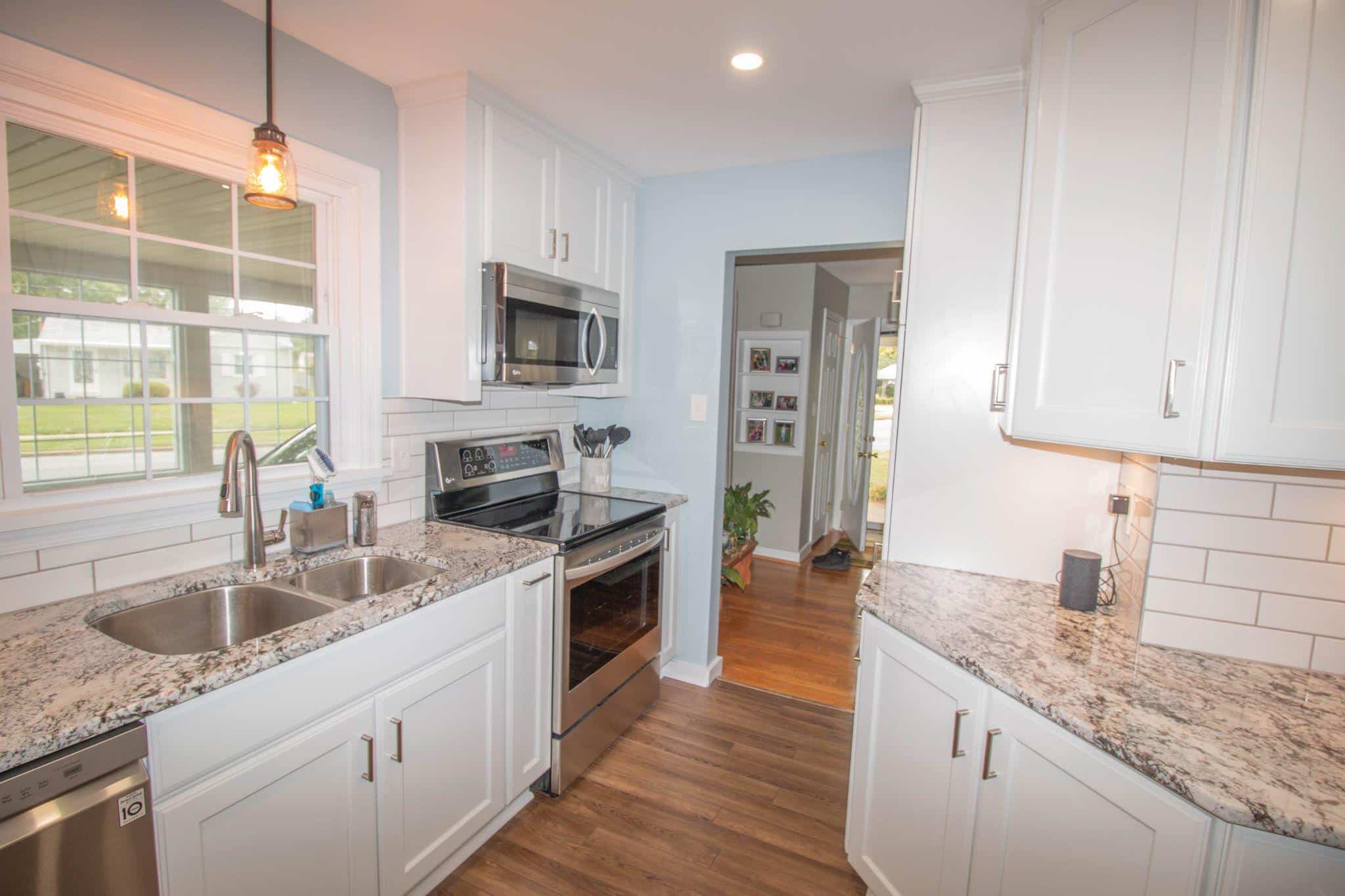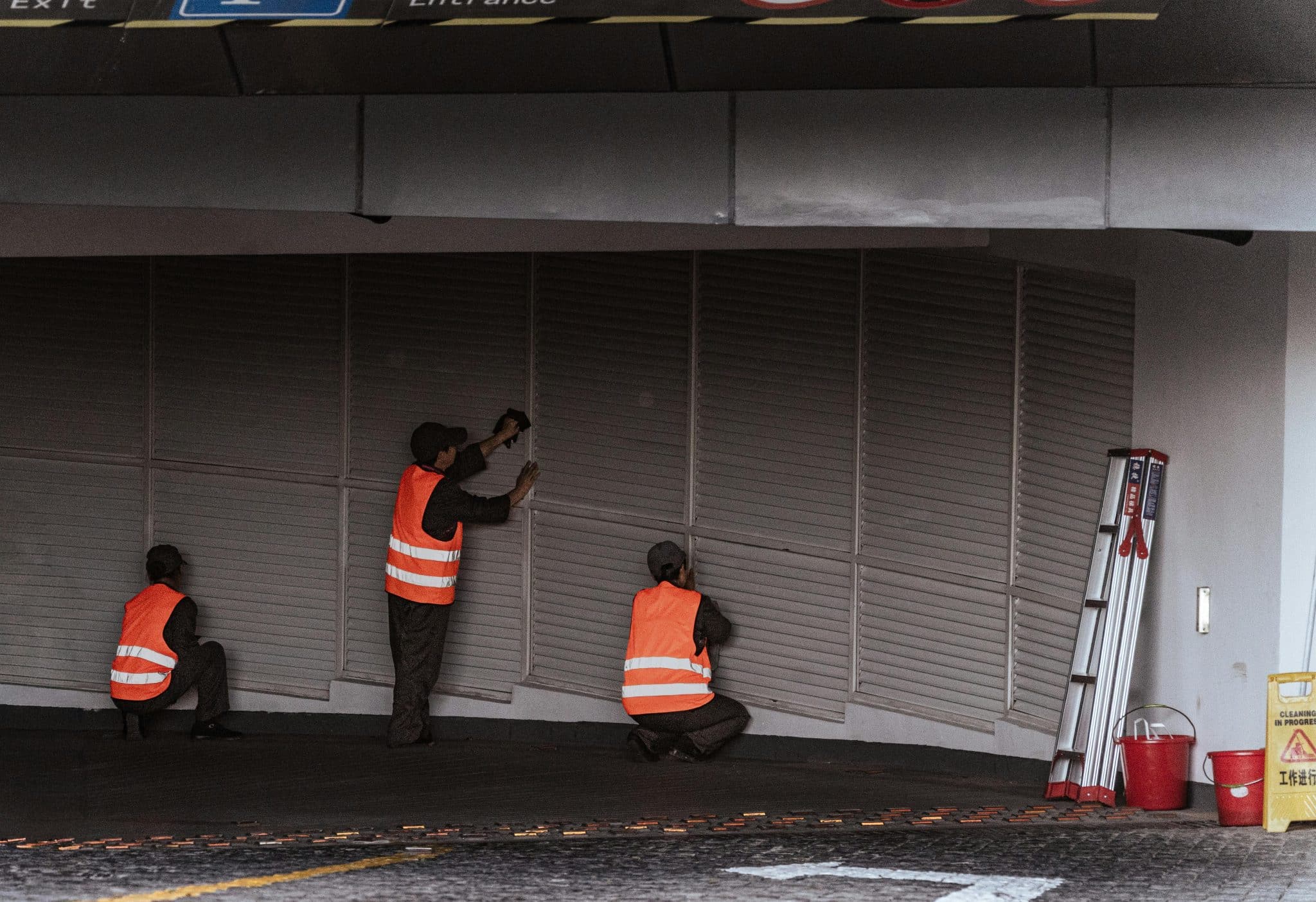Finding wallpaper that matches your room’s color scheme perfectly can be hard. I spent hours looking through stores and websites only to find options that didn’t quite fit my vision.
Here’s the good news – you can make your own wallpaper at home using basic materials and simple stamps.
This method lets you match your paint colors exactly and create patterns that truly reflect your style.
In this guide, I’ll show you my step-by-step process for making lino-printed wallpaper.
You’ll learn how to design a pattern, carve your stamp, and print your custom wallpaper.
I’ve used this technique in my own home, and the results look professional.
What’s Wallpaper Stamping All About?
Wallpaper stamping is a creative DIY approach that transforms plain walls into personalized works of art using handmade lino stamps and paint.
Think of it as creating your own custom wallpaper pattern but with a more personal touch and perfect color match to your existing decor.
Instead of spending hours searching through stores for the right pattern, you can carve your own design into a lino block and stamp it directly onto lining paper, creating a unique pattern that perfectly suits your space.
How Does It Actually Work?
At its heart, wallpaper stamping is a simple printing technique where you carve your desired pattern into a lino block, apply paint, and press it onto lining paper to create repeating patterns.
The beauty of this method lies in its flexibility – you can create anything from geometric shapes to nature-inspired designs, all while matching your exact paint colors.
The process involves basic materials like lino blocks, lining paper, and wall paint, making it accessible to most DIY enthusiasts.
The slight variations in each stamp impression add character to your walls, creating a handcrafted feel that mass-produced wallpaper simply can’t replicate.
It’s particularly appealing because it lets you control every aspect of the design, from the pattern spacing to the color intensity, resulting in walls that tell your unique story.
Tools and Materials You’ll Need for Wallpaper Stamps
Materials Required
| Material | Notes |
|---|---|
| Lino Block | Mounted lino offers better stability; softer lino is easier to cut but less durable. |
| Lining Paper | High-grade paper is more durable and absorbs paint better; pre-cut with extra for trimming. |
| Wall Paint | Use the same matte emulsion for the background and pattern for even coverage. |
| Masking Tape | Low-tack tape secures paper and creates clean edges without damage. |
Tools List
| Tool | Notes |
|---|---|
| Lino Cutting Tool | A set with V- and U-gouges allows for varied textures; a good grip improves control. |
| Paint Brushes | Use a wide brush for backgrounds and a smaller one for stamping; foam brushes work well, too. |
| Measuring Tools | Metal rulers ensure clean cuts; measuring tape and set squares help with accuracy. |
| Work Surface | A cutting mat protects surfaces, while a stable table ensures precision in carving and printing. |
Wallpaper Stamping Steps: From Start to Finish
Step 1: Research and Design
Start by gathering inspiration from books, magazines, and online sources.
Create a mood board with your chosen images.
Focus on finding patterns that appeal to you.
Look at both old and new designs to create something unique.
Step 2: Create Your Pattern
Draw your design on paper first.
Split your paper into four equal parts using straight lines.
Place your main design in the center.
Add supporting elements along the edges, but don’t cross the boundary lines.
Step 3: Test the Pattern Repeat
Cut your design into four pieces along the lines you drew.
Switch the diagonal pieces and tape them together. Fill in the empty center space.
Add extra details to create a flowing pattern. Test your repeat by scanning and copying the design multiple times.
Step 4: Prepare Your Materials
Cut the lining paper to match your wall height plus 20 centimeters (10 cm extra on top and bottom).
If needed, tape pieces together for wider coverage.
Apply a base coat of paint to your paper and let it dry completely.
Step 5: Carve Your Design
Transfer your pattern to the lino block.
Use the cutting tool carefully to carve out your design.
Remember to work slowly and always cut away from yourself for safety.
Step 6: Print Your Pattern
Apply paint to your lino stamp using a brush for a textured look.
Line up your stamp carefully with the paper edge. Press firmly and evenly across the entire stamp.
Continue printing in a consistent pattern across your paper.
You can refer to this video by How To Renovate A Chateau, for a visual guide.
How to Take Care of Your Stamps?
- Clean stamps right after use – dried paint is hard to remove
- Use warm water and mild soap for cleaning
- Let stamps dry completely before storage
- Check edges regularly for wear and tear
- Store flat to prevent warping
Long-Term Care Tips
- Take photos of your pattern for future reference
- Keep a record of paint brands and colors used
- Save a small test print for color-matching
- Check walls seasonally for any needed touch-ups
Creative Ideas for Stamped Walls
Create walls that stand out with custom patterns. Choose designs that match your style and taste. The finished walls will make your space feel special and personal.
Geometric and Nature-inspired Patterns
1. The Power of Simple Shapes
Simple shapes often make the strongest statements on walls.
I love starting with basic triangles, setting them like scattered stars across the surface. This creates a clean, modern feel without trying too hard.
For a softer touch, circles work beautifully – I space them like gentle bubbles floating up the wall.
2. Bringing Nature Home
Nature brings endless pattern ideas into our homes.
My favorite approach starts with basic leaf stamps, placed to look like they’re drifting down the wall.
Single flower shapes, lined up in neat rows, bring garden freshness inside.
When I want something more subtle, I use branch patterns that seem to grow naturally up the wall.
Abstract and Modern Designs
1. Breaking Pattern Rules
Breaking free from standard patterns opens up so many options.
I often start by placing stamps randomly, letting the design flow naturally. This creates an organic feel that’s both bold and personal.
Sometimes, I’ll break up patterns halfway across a wall, leaving parts unstamped – this makes an unexpected statement that draws the eye.
2. Playing with Scale
For a fresh take on modern style, try mixing stamp sizes.
I like using one large stamp as a focal point and then surrounding it with smaller patterns. This creates depth without feeling busy.
Color blocking with patterns adds another layer – try stamping different patterns in distinct sections of your wall.
3. Fresh Takes on Classic Patterns
Let’s talk about new ways to use traditional patterns.
Half-stamped walls make a strong statement – stamp from the floor to chair-rail height, leaving the top clean.
Or focus your pattern in the corners, letting it fade toward the center. A single line of stamps can define a space better than a whole wall of pattern.
Pro Tip: Start small with one pattern you love. Your walls should make you happy every time you see them.
Remember: Test your pattern ideas on paper first. This helps you spot potential issues before they happen on your wall.
Conclusion
Making wallpaper at home opened my eyes to a whole new way of personalizing spaces.
This simple lino printing method brings together basic crafting skills to create something special for your walls.
Looking back at my first stamp design compared to my latest prints, I see how each attempt taught me something new.
The tiny marks from my paintbrush strokes and the slight variations in each print added a character that mass-produced wallpaper just couldn’t match.
Remember, your first print doesn’t need to be perfect. Each small imperfection tells a story and makes your walls uniquely yours.
When guests ask about my wallpaper now, I smile, knowing I created it with my own hands.










